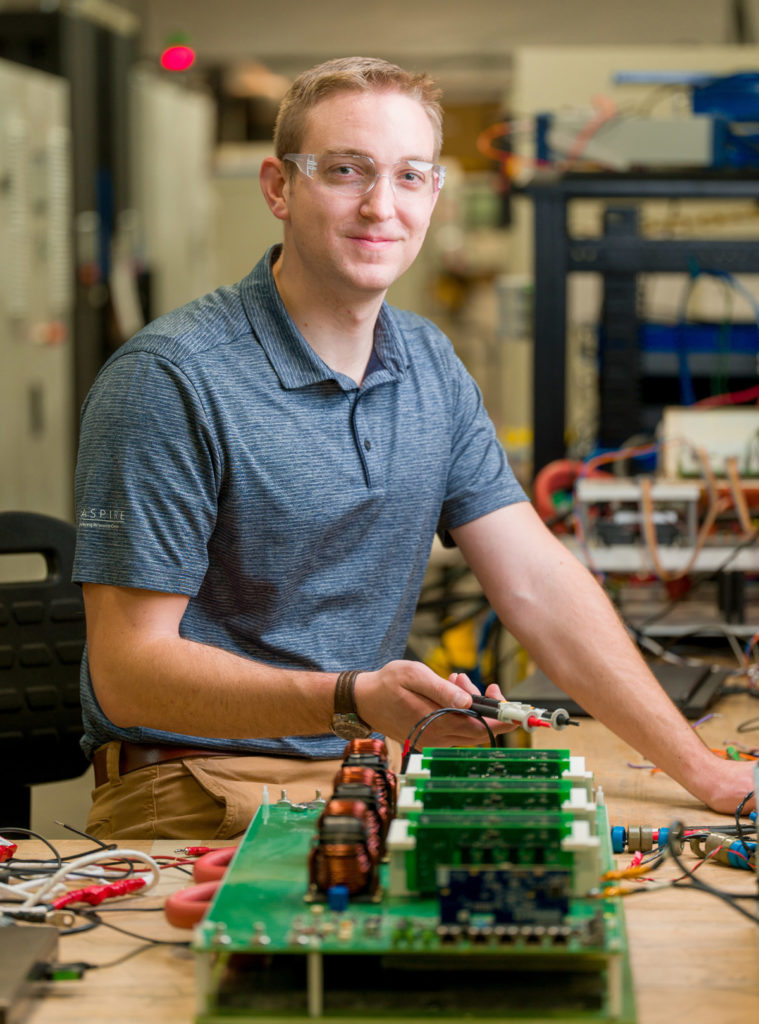Engineering Improvements to EV Charging

Meet Matthew Hansen. He’s changing the world — one electric vehicle at a time.
Hansen ’20, a Ph.D. student studying electrical engineering, with the help of his mentors and professors Regan Zane and Abhilash Kamineni, invented a control algorithm to wirelessly charge electric vehicles while in motion—an idea that was first formed as an undergraduate.
Hansen aimed to find an effective way to synchronize power transfer coils in the road to in-motion electric vehicles, while also determining how roadway coils can detect an approaching vehicle.
“We need a way to synchronize and detect, and this is what this algorithm does,” Hansen explains. “It allows us to do that in a simple way without extra hardware.”

In 2017, Hansen originally planned to study mechanical engineering but switched to electrical at enrollment. Soon after, he began conducting research with USU’s Advancing Sustainability through Powered Infrastructure for Roadway Electrification (ASPIRE) center and solidified his love for electrical engineering.
“It’s magic,” he says. “You don’t see voltage or current; it just works.”
Earlier this year, the three researchers were granted a patent from the U.S. Patent Office for their contribution. Hansen has continued to work with Kamineni on the algorithm and will start full power testing in spring 2023 at the ASPIRE electrified vehicle and roadway test facility. The EVR track is a quarter mile of electrified track able to test and demonstrate stationary and in-motion wireless charging, grid integration, and real time vehicle interaction.
Hansen’s doctoral studies continue to focus on electrification and wireless and optimal wired charging.
“Electrification is the future of cost stability and sustainability. As we improve electrification, we’ll see that electric vehicles become cheaper and easier to maintain than gas powered vehicles,” Hansen says. “It’s exciting to be here at USU where we can test these things out. There is nowhere else where we can do this and I’m really excited to be a part of that.”
By Sydney Dahle ’21
Opening photo courtesy of Lee Rosario of Pixabay.





